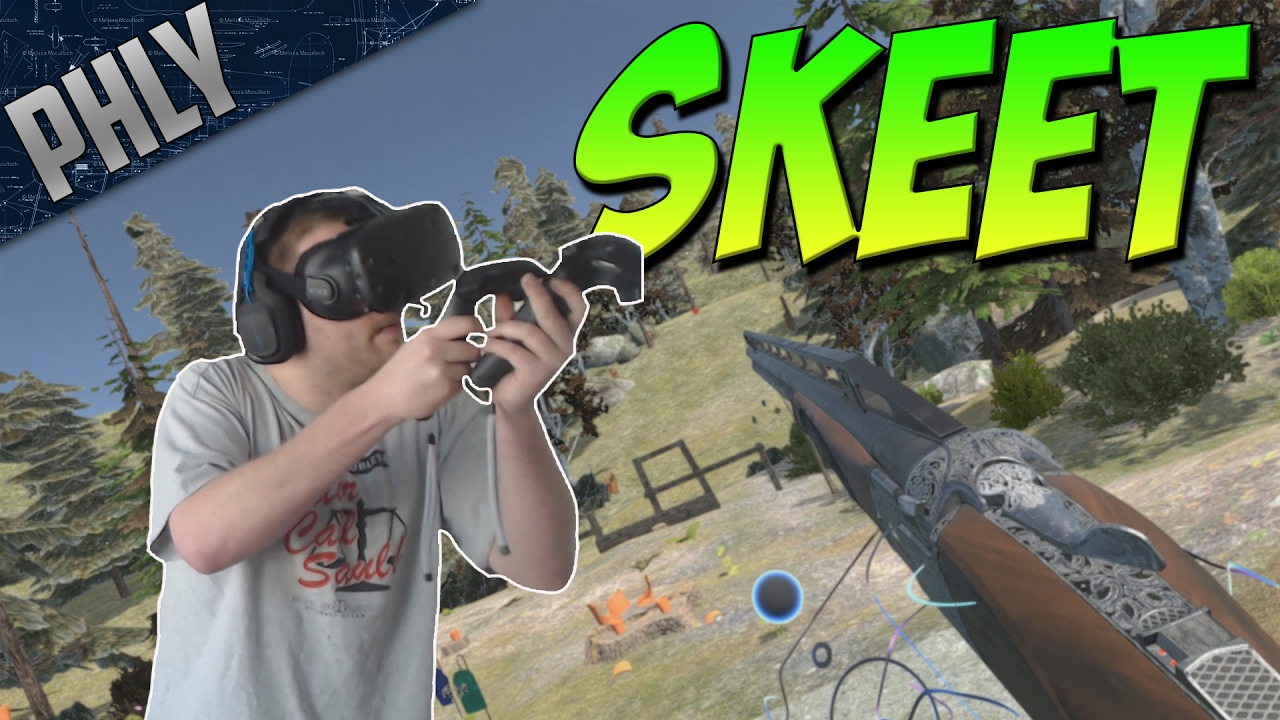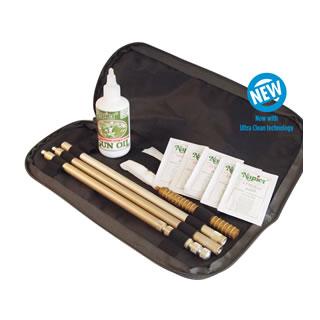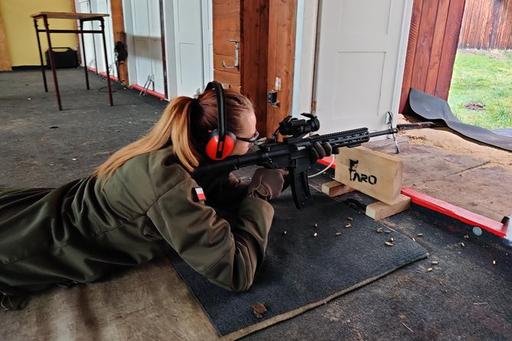
This article will compare and contrast the two sizes of shotguns and discuss why the 20 gauge is better and more versatile. We will also discuss their strengths and weaknesses. This includes killing ducks and geese, self defense, and more. We have provided a comparison chart below to help you choose the right size. The size of the shotgun you select will ultimately depend on its intended use.
You can use 20-gauge shotguns more effectively
The 20-gauge shotguns are a better choice for small game than their larger cousins. Because they are lighter in weight and have a lower recoil, they are easier to shoot. They string longer than their larger cousins. They are more versatile than their 12-gauge counterparts. Their predecessors have been largely obsoleted by the 20-gauge 3" magnum shotguns. But there are still some advantages to consider with these firearms.
A 20-gauge shotgun can be more easily handled than a 12-gauge equivalent. A lightweight 20 gauge shotgun makes it easy to use at range. In addition, ammunition in this caliber is usually less expensive than that from 12-gauge shots. A 20-gauge shotgun is a great choice for beginners or veterans.

They shoot more pellets
A shotgun with a 20-gauge gauge will generally have fewer pellets per inches, while a 12-gauge shotgun may have more. What's the difference in these shotguns? One, the shot string of the 20-gauge is shorter than that of the 12-gauge. This makes the 20-gauge shotguns easier to hit the target.
Both of these shotguns can be used to hunt waterfowl but they are not suitable for larger game. Both guns can be used in waterfowl hunting. The lighter 20-gauge gun is easier to carry and swing, making it more comfortable to hunt fast ducks. Additionally, larger pellets won't fit through the bore of a 20 gauge shotgun, so a smaller gun will work better when hunting waterfowl.
They are more effective at killing ducks and geese
Hunting geese and other game birds with a shotgun is easy than you think. Although ducks and geese will go wherever they want, once they have adapted to their environment it is difficult to eradicate them completely. Minnesota's goose population is on the rise, and it is making hunting more difficult. There are some tricks that make hunting geese much easier.
Goose sprays and repellents are one option. These products repel geese and deter them from the area. You should be cautious as geese can not be easily repelled by sprays. If they become accustomed to the scent of your pesticide, it's better to wait for the geese to migrate elsewhere. After geese settle down in an area, however, they can become more comfortable with disturbances and may migrate to other areas.

They are better at self defense
Julie Weitlauf, a University of Washington researcher, found that self-defense students are less likely to experience test anxiety. This was despite the fact that most of the students were male. She found that self defense students had a lower fear for sexual assault than other students in the same study. Further, women who learned self-defense were more likely to avoid sexual assaults than men, and the women were more likely to use their skills to protect themselves.
FAQ
How many Americans rely on hunting for their livelihood?
Over 300 million hunters reside in the United States. This is nearly twice the number of hunters than New York City residents.
Hunting is an American pastime that dates back centuries. But today, fewer Americans hunt for sport than ever before. The U.S. According to the Fish & Wildlife Service, only 2 percent hunt regularly. That number is even lower among young adults.
But while hunting may seem like a relic of another time, it remains popular among older generations. According to a survey, 68% of baby boomers expect to hunt once again when they are older. Hunting is an opportunity to reconnect with nature and experience the outdoors.
Hunting is not a priority for younger generations. According to the National Shooting Sports Foundation 18% of millennials are avid shooters.
FWS has been working hard to preserve America's wilderness places for everyone to enjoy.
In 2014, the agency started the "Wild Lands” initiative to raise awareness about the importance of public lands. It is intended to raise awareness and encourage people visiting these areas to preserve them.
Conservation efforts are also encouraged through the Wild Lands Program. FWS and National Rifle Association have partnered to create Project Gunter, a youth shooting sport program. This program teaches kids how to safely handle firearms and helps them develop skills such as marksmanship and safety.
Project Gunter is now expanding to women and minorities. This has led to more children learning how to use guns and becoming active participants in wildlife conservation.
Where can I buy a gun? What gun do I need?
Certain species require a gun to hunt.
A firearm is required by most states for hunters. It depends on what game you intend to hunt and where you live.
You can buy a rifle, shotgun, handgun, muzzle loader, crossbow, or archery weapon at any sporting goods store.
You should ensure that you select a weapon that suits your needs. A.22 caliber pistol is a good option if you're looking for small game hunting such as squirrels and rabbits.
Consider purchasing a larger caliber gun if your goal is to hunt large game like deer, elk or bears.
Don't buy a weapon until you feel confident with it. Guns are dangerous tools. It is a dangerous tool.
Be sure to inspect the gun before buying it. Ask the seller how to load and unload the gun.
Make sure to check the warranty. If no warranty is provided, ask the dealer to provide a guarantee.
Ask the dealer to provide you with a copy of their safety instructions. These documents should include information about safe storage and maintenance.
You should check the serial number. If it begins with "NIB", the serial number means that the gun was brand new.
If the serial # begins with an odd numbers, the gun may have been previously owned.
If you are unsure whether the gun has been used, contact the manufacturer directly. They should be willing to give you details about the gun's history.
Is hunting dangerous?
Yes, hunting can cause injuries.
There are many ways you can injure oneself.
Improper shooting techniques are one way. An example of this is when you shoot at an incorrect angle or hit the wrong area of the animal.
Another danger is being attacked or bitten by another animal.
Hunting accidents happen every day. Many people are killed or seriously injured by their guns.
Hunters are advised to keep their guns loaded until they reach their destination.
It is also important that they do not take their guns with them when they venture into the woods.
Always keep your eyes open. Be aware of where you step and listen to the sounds around you.
You should not approach any animal unless you can defend yourself.
Never chase after prey. Instead, wait patiently to see them.
Never make a mistake. They could result in injury or death.
You should be careful when you are near cliffs or other places where you cannot view what is below.
Stay away from rivers and streams. These places can flood unexpectedly.
While hunting, avoid drinking alcohol. You can slow down your reaction time and affect your judgement.
All safety equipment should be kept close to your body. Always carry a first-aid kit and flashlight.
It is important to know how to treat an emergency. Do not assume you know the basics of first aid or CPR.
Why is it that the U.S. Department of Agriculture (USDA), only estimates that 1% of hunters kill a deer each year?
The USDA estimates that approximately 6.5 million Americans hunt buck. Only 2.2 million shoot one.
This means that about 0.6% of hunters kill a deer each season.
What kind of training do I need to become a hunter? What is the average time it takes?
A basic course is required to learn how hunt. This course covers the basics of hunting, as well as information on the laws.
This course will teach you how to safely handle guns and ammunition. These items can also be used safely.
The course can last anywhere from 2 weeks to 3 months. Online courses may be offered for some courses. Other courses are available in person.
You must pass a written exam to be eligible for a license. You might also need proof that you have completed a hunter's education course.
What is the cost of getting licensed? What if my budget is limited?
The cost of getting licensed varies depending on the state you live in. It costs anywhere from $20 up to more than $100.
If you do not have enough money, you may be able to apply for a loan or grant.
A tag must be purchased in addition to the hunting fee. Prices for tags vary depending on what type of game you hunt.
There are tags available for bear, elk and moose as well as waterfowl, upland birds and furbearers, such as foxes.
Some states require you to register with the Department of Natural Resources before you can obtain a license.
Check local regulations before you go hunting.
Which state has the highest number of deer hunters?
Wyoming is home of the most deer hunters. It also sells most hunting licenses annually.
South Dakota is home to the second-most deer hunter state. It is ranked third for the annual number of hunting permits sold.
New Hampshire is home to the most deer hunters. It is last in the country for hunting license sales per capita.
What are the many benefits of hunting?
Many cultures have long practiced hunting. It was used for food, clothing, shelter, tools, medicine, and other purposes. In modern times, people still hunt for sport, but also for food and recreation. The meat from hunted animal is usually consumed immediately following killing. However, the skin, feathers, bones, antlers horns, teeth and hooves of the animals may be sold as trophy parts.
Hunting isn't just a way of eating; it's a lifestyle.
Because they hunt together, hunters have strong family bonds and close friendships. They share stories and memories at campfires and over meals.
Hunters love nature and wildlife which allows them to appreciate life on Earth.
They learn responsibility and respect for others when they take care of game animals.
Conservation helps hunters be better citizens. They work to protect habitats, species, and the environment. They are able to understand the amount of land and water that is necessary for survival.
Hunters are an integral part of a group. Their families depend on them. They support one another. They support local businesses.
Hunters are known for their generosity. Many Hunters donate money to support children, seniors, veterans, or other groups.
Hunters can also volunteer their time to help those in need. For example, they could work with the Humane Society of the Red Cross.
Statistics
- Thanks to the 1937 Pittman-Robertson Act, an 11% excise tax was placed on the sale of firearms, which were then used for conservation. (stacker.com)
- According to the Wildlife Restoration Act, passed in 1937, most of the state conservation efforts are funded through hunting and fishing license sales and firearms sales. (stacker.com)
- - Percent of residents with paid hunting licenses: 0.7%- (stacker.com)
- Over the past 50 years, the number of hunting licenses in California has been on a rapid decline, falling 70% from more than 760,000 in the 1970s to under 268,000 in 2020—even as the state's population has skyrocketed, according to The Mercury News. (stacker.com)
External Links
How To
How to choose the most desirable hunting spots in the forest
Knowing what kind of game you wish to hunt is the first step in hunting. There are many different species of animals and birds living in forests. They all have their own habitat requirements so you will struggle to find the best place to hunt them.
There are two main types of animals that live in the forest: large mammals or small mammals. The large mammals include deer, elk, moose, caribou, bear, wolf, and wild boar. Squirrels, rabbits, squirrels and hares are some of the small animals. Each species has its unique habitat. This means that you need to pick the best spot before heading out into woods. Online information can be accessed to check if endangered species are found near your home. You should ensure that you are not poaching in the area where you intend to hunt a particular species.
You will need to be able to set up your equipment properly if you are going to hunt a specific species. You can greatly impact your success rate by using the right equipment. You will need a gun that can accurately shoot at close range if you are hunting a rabbit. But a rifle that can easily shoot far distances is necessary if you are hunting a larger animal like a deer. Also, you'll need some sort of bait to attract the prey. Some people suggest placing meat in a trap to attract the animal. Others prefer corn butter or peanut butter. Whatever your choice, make sure to follow all rules and regulations in the country where hunting is taking place.
When choosing a hunting spot, you'll need to consider several factors including the weather conditions, terrain, vegetation, wildlife population, and accessibility. Safety is the most important thing when hunting. Be sure to avoid dangerous animals and predators when hunting in a remote area. You should avoid areas with high populations, especially during hunting season. Hunting seasons are important as they will help you choose the best times to hunt.
The weather is also important when you are choosing a hunting spot. This is very important because it determines the number of animals that will be around. When temperatures drop below zero Celsius, snow covers the ground. The thick snow layer makes it difficult for coyotes, bears, wolves, deer and other animals to be seen. If you are lucky enough to have clear skies, you may be capable of seeing these animals. On the other hand, in summer, the temperatures rise above 30 degrees Celsius, and the sun warms the earth. The heat causes animals to flee from the heat in order to find shelter.
The terrain should be considered as well. You can easily walk and run across the area on a flat surface. But uneven surfaces require more effort. Steep slopes can be difficult to climb and streams and rivers can often create muddy trails. So that you can navigate the area easily, try to find a spot without any obstacles.
You should look at the vegetation as well as the terrain. Plant size and density will vary depending on the environment. For smaller animals, large trees can provide shade and cover while shrubs or bushes can offer shelter. You should search for dense vegetation if you wish to find large animals.
Last but not least, be mindful of how many animals you are allowing into your home. Statistics show that there are over 100 million deer in North America. They eat nearly half of all food produced by crops and are essential to maintaining biodiversity. They can also become pests and endanger the ecosystem if their numbers grow too fast. It's vital to balance the population.